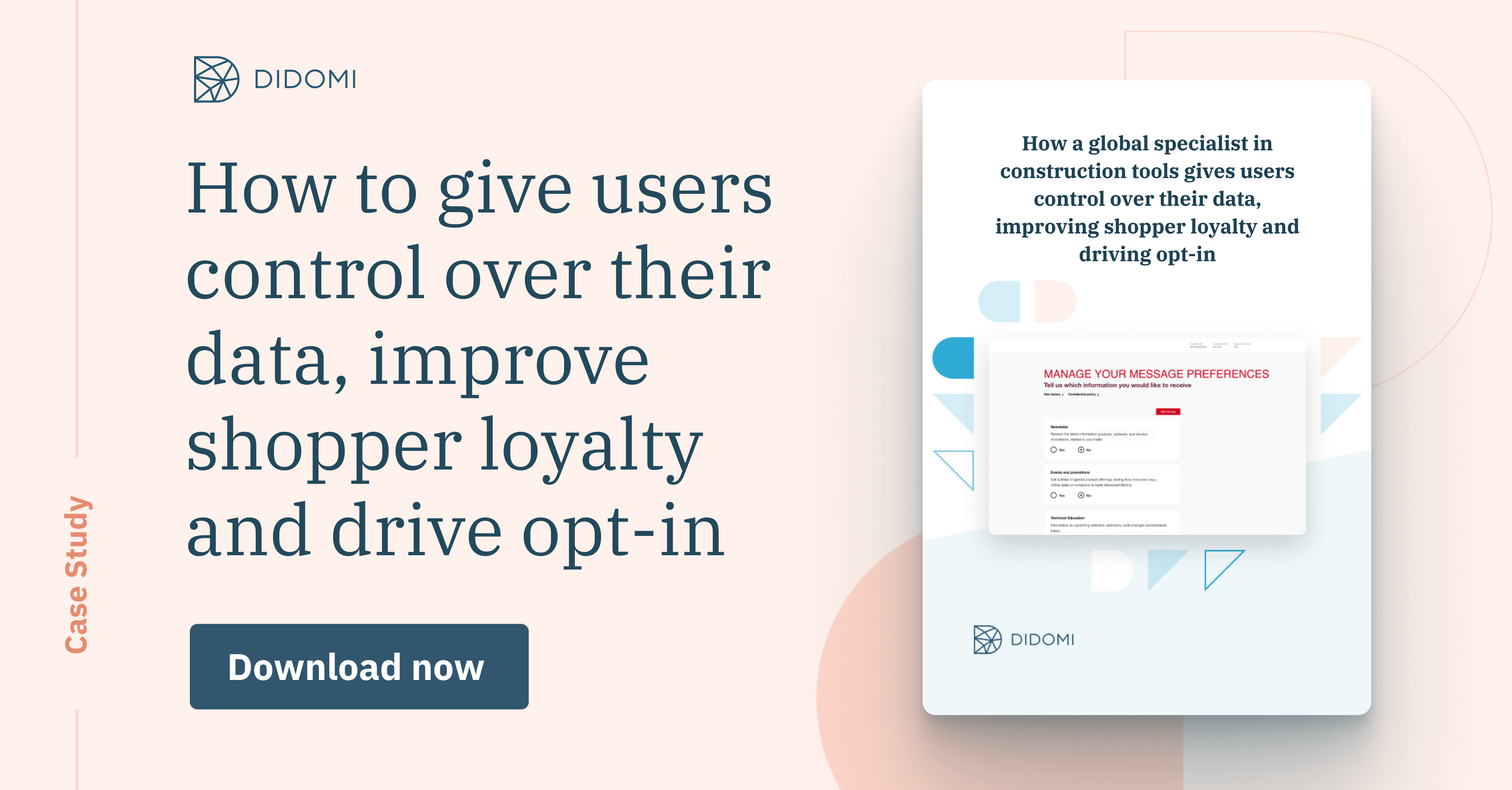What does it mean to set up a Preference Center? In this last post of a series of 4 blog articles, I explain the steps to take. After phase 1 dedicated to the definition of the objectives, phase 2 to the configuration before going online, and phase 3 to the deployment and communication, here is the fourth one dedicated to the tracking of the results.
Summary :
-
Step 1: Define the objectives and scope of your Preference Center project
-
Step 3: Deploy your Preference Center on all your channels and communicate
What is a Preference Center?
A Preference Center allows your prospects and customers to change their communication preferences at any time, be it frequency, channels or communication purposes. This allows you to keep your database and its segmentation up to date, thus improving the performance of your marketing campaigns.
According to Gartner, by the end of next year, 30% of B2C companies will have such a system in place to facilitate this management of customer preferences and consents. But how should such a project be thought out and implemented?
|
What are the many benefits of a Preference Center? Generating trust among customers, streamlining in-store and online consent collection, driving opt-in and much more... Download our full case study to find out more.
|
Step 1: Define the objectives and scope of your Preference Center project
To find out how to define the objectives and scope of your Preference Center project, see our article on this subject here.
Step 2: Prepare for the launch of your Preference Center
To find out how to set up and prepare for the launch of your Preference Center, see our article published here.
Step 3: Deploy your Preference Center on all your channels and communicate
To find out how to roll out your Preference Center across all your channels and communicate the launch, see our article published here.
Step 4: Track customer preference metrics and communicate
A recent study showed that the benefits of implementing a Preference Center include an increase in the customer base (52%), engagement rates (59%), the number of opt-ins (47%) and even revenue, with a return on investment of between €37 and €46 per euro invested (Data Marketing Association, 2020)!
This data is based on a survey of marketing professionals, but is not a compilation of actual data. Indeed, very little of this data exists today, simply because the market is very new and few companies are willing to disclose the results of their work.
There are theoretical models or blogs that state that "studies show that setting up a [Preference Center] can halve the rate of unsubscribing to newsletters", but there are few quantified studies (we did find a few rare cases, like PetDoors.com).
Among the indicators to be monitored following the implementation of your Preference Center, here are some of the main curves to watch closely:
-
The number of people who have updated their preferences, compared to the number of people who have been invited to do so or have visited your Preference Center
-
The evolution of the number of opt-in contacts (who have consented to receive your communications), per channel if you already have an omnichannel strategy. Obviously, you want this number to increase!
-
The evolution of the number of opt-out contacts (no longer wishing to receive your communications) per channel. This indicator should decrease.
-
The number and the sense of changes in preferences, i.e. the opt-down rate for those who wish to reduce marketing pressure, the opt-up rate for those who instead wish to hear from you more regularly or on other channels
-
The evolution of deliverability and engagement on your different channels, especially on those that have been updated, since they have been explicitly chosen by your users
-
Improving the segmentation of your CRM, based on the criteria you use on a daily basis (general addressability, addressability by channel, share of engaged users vs. inactive users etc.)
-
The perception of the Preference Center by your users and customers, to measure the benefit and understand the impact of your customer-centric strategy and improve the Preference Center tool over time.
There are of course many other indicators to follow, but the aim here is not to be exhaustive. Indeed, there are many use cases for a Preference Center.
You won't be looking at the same metrics if you're looking to engage your B2B sales force (in which case you'll measure the number of opt-in contacts among your salespeople) or to encourage preference updates across different brands in a group (where you'll be able to track the average number of brands your customers have given marketing permission to).
At Didomi, we know that our customers are measurement driven, and that's a very good thing. That's why we provide our customers with a range of analysis solutions, both on the Didomi Console (for customers only) and in our customers' tools.






.png?width=1740&name=Pref%20Center%20article%20series%20featured%20image%20(1).png)
%20(1).png?width=1740&name=Pref%20Center%20article%20series%20featured%20image%20(2)%20(1).png)
%20(1).png?width=1740&name=Pref%20Center%20article%20series%20featured%20image%20(4)%20(1).png)




